Even if one puts Morrisons’ swoop on Safeway to one side, the year was marked by constant upheaval with both retail and supply sides remaining hellbent on consolidation. As Asda’s star rose, Sainsbury struggled to leave behind poor relation status. The multiples placed availability at the top of the agenda, while suppliers faced growing pressure over obesity. The Grocer assesses a remarkable year
If Sir Ken Morrison had wanted to hog the headlines for the whole of 2003, he certainly went about it the right way.
The world of British food retailing moved into a new era on Thursday, January 9 when the bid was announced.
Some might see the takeover as an inevitability now, but at the time it was a shock to everyone - except Safeway, which, it later transpired, had entered into talks with the northern chain late last year.
It was easier to name those who did not join the bidding fray for the 480-store chain than those who did over the first few weeks.
Morrisons’ £2.9bn share offer was soon trumped by an indicative offer from Sainsbury of £3.2bn cash and shares and an undisclosed, but rumoured to be higher, figure from Asda.
Philip Green, Kohlberg Kravis Roberts and ex-Asda and current PO boss Allan Leighton weren’t far behind, all eyeing the potential of Safeway’s £4.5bn estate. Safeway had no choice but to react. It swiftly withdrew its recommendation of Sir Ken’s offer.
But the real curve balls came from elsewhere.
First, secretary of state for trade and industry Patricia Hewitt referred the Morrisons bid along with everyone else’s to the Competition Commission.
Then, on June 24, the commission fixed on four as the magic number in a remedies statement that suggested that a merger with the northern chain “could be pro-competitive in creating a powerful fourth national player to offer competition to Asda, Sainsbury and Tesco”.
Finally, when it published its findings in August, it gave the green light to a bid from Morrisons, but banned all other would-be trade buyers from bidding for all except the 53 stores that Morrisons would have to dispose of to satisfy competition requirements.
Sainsbury and Asda reportedly remonstrated with the commission over the decision, which in effect left Safeway in Morrisons’ hands, though speculation was rife for a while as to the exact level at which Sir Ken would pitch his bid.
Meanwhile, the DTI relaxed the blanket ban on bids for stores other than the 53, later 52, that Morrisons would have to divest.
Safeway invited “indicative offers” for the stores, which spurred Asda’s speculative £2bn offer for 70 stores. The move was academic: Morrisons raised an anticipated £2.89bn bid to £3bn to clinch the deal.
The Grand National that might have been turned into a one-horse race, but it still had everyone enthralled.
And the story continues.
The long anticipated re-ranking of the UK’s top grocery multiples finally took place in July when Asda swept past Sainsbury to clinch the second spot in the UK grocery league table, according to TNS.
The watershed was reached when till roll data showed Asda had boosted its share of the market to 17% against Sainsbury’s 16.2% in the four weeks to July 20.
Most industry experts put this down to Asda’s challenge to non-food and in particular its George clothing range. However, Asda boss Tony DeNunzio insisted that food sales were also driving growth.
For Sainsbury, the loss of the second spot was to be no blip in the statistics - worse was to come. Dogged by rumours that it was about to hoist the for sale sign, speculation over a new chief executive and problems with its transition to high-tech automated warehousing systems, its belated launch in September of a comprehensive non-food offer failed to convince. Analysts warned it was being distracted from a fundamental rethink of its brand and asset base and whether it should change its brand to fit the portfolio or vice versa.
Another question is whether Justin King, who pulled off some impressive moves at M&S, can extract the benefits of Sir Peter Davis’s restructuring programme by generating sales growth.
Years of independent retailers’ resentment about the low margins on utility payments boiled over in March when the chiefs of the leading symbol groups called for concerted action.
No more, warned Spar MD Jerry Marwood, would retailers accept such unsustainable levels of commission, as he joined the first real uprising of militancy among the independents.
However, attempts to discuss the problem with PayPoint and the utilities proved fruitless. “We talked to PayPoint and they were not interested, so we talked to the utility companies, but they didn’t want to know either. Retailers must come together or they will continue to be used,” he said.
Fellow symbol group chiefs, Colin Graves of Costcutter and Graham White of Londis, agreed and rivalries were put aside for talks.
While conceding commission on some items was 0.5% and capped at 13p per transaction, PayPoint said it could not raise commission on these items because its hands were tied by the utilities.
PayPoint said it was trying to grow higher commission business such as e-top-ups, which allowed it to portray itself as fighting for retailers, when Vodafone announced in October it would cut margins on e-vouchers.
PayPoint and several other service providers were not happy with the cut and many retailers said they would not stock the new product. As the year draws to a close, the stand-off with Vodafone continues with little sign of acceptance from retailers.
The £10bn tobacco industry, which had been at the forefront of some of the wittiest campaigns for decades, was forced to abandon consumer advertising.
The ban, which came into force in February, prompted a flurry of swansong campaigns. Silk Cut brand owner Gallaher was among those to attract the most attention with a poster ad proclaiming the fat lady had, indeed, finally sung to bring the curtain down on tobacco advertising. Another, for Imperial’s Lambert & Butler, carried the slogan ‘Looks like we’ve been outlawed, Sir’.
But the industry restrictions didn’t end there. Further EU measures required cigarette packs to carry larger health warnings on the front and back by September, while descriptors such as ‘Lights’ became illegal at the same time. Sports sponsorship (apart from events with ‘global recognition’) went up in smoke in July and all packs must display their nicotine content from the new year.
Sir Ken passes the post with a £3bn flourish
Asda leapfrogs Sainsbury to No 2 spot
Anger turns to active protest
Outlawed
If Sir Ken Morrison had wanted to hog the headlines for the whole of 2003, he certainly went about it the right way.
The world of British food retailing moved into a new era on Thursday, January 9 when the bid was announced.
Some might see the takeover as an inevitability now, but at the time it was a shock to everyone - except Safeway, which, it later transpired, had entered into talks with the northern chain late last year.
It was easier to name those who did not join the bidding fray for the 480-store chain than those who did over the first few weeks.
Morrisons’ £2.9bn share offer was soon trumped by an indicative offer from Sainsbury of £3.2bn cash and shares and an undisclosed, but rumoured to be higher, figure from Asda.
Philip Green, Kohlberg Kravis Roberts and ex-Asda and current PO boss Allan Leighton weren’t far behind, all eyeing the potential of Safeway’s £4.5bn estate. Safeway had no choice but to react. It swiftly withdrew its recommendation of Sir Ken’s offer.
But the real curve balls came from elsewhere.
First, secretary of state for trade and industry Patricia Hewitt referred the Morrisons bid along with everyone else’s to the Competition Commission.
Then, on June 24, the commission fixed on four as the magic number in a remedies statement that suggested that a merger with the northern chain “could be pro-competitive in creating a powerful fourth national player to offer competition to Asda, Sainsbury and Tesco”.
Finally, when it published its findings in August, it gave the green light to a bid from Morrisons, but banned all other would-be trade buyers from bidding for all except the 53 stores that Morrisons would have to dispose of to satisfy competition requirements.
Sainsbury and Asda reportedly remonstrated with the commission over the decision, which in effect left Safeway in Morrisons’ hands, though speculation was rife for a while as to the exact level at which Sir Ken would pitch his bid.
Meanwhile, the DTI relaxed the blanket ban on bids for stores other than the 53, later 52, that Morrisons would have to divest.
Safeway invited “indicative offers” for the stores, which spurred Asda’s speculative £2bn offer for 70 stores. The move was academic: Morrisons raised an anticipated £2.89bn bid to £3bn to clinch the deal.
The Grand National that might have been turned into a one-horse race, but it still had everyone enthralled.
And the story continues.
The long anticipated re-ranking of the UK’s top grocery multiples finally took place in July when Asda swept past Sainsbury to clinch the second spot in the UK grocery league table, according to TNS.
The watershed was reached when till roll data showed Asda had boosted its share of the market to 17% against Sainsbury’s 16.2% in the four weeks to July 20.
Most industry experts put this down to Asda’s challenge to non-food and in particular its George clothing range. However, Asda boss Tony DeNunzio insisted that food sales were also driving growth.
For Sainsbury, the loss of the second spot was to be no blip in the statistics - worse was to come. Dogged by rumours that it was about to hoist the for sale sign, speculation over a new chief executive and problems with its transition to high-tech automated warehousing systems, its belated launch in September of a comprehensive non-food offer failed to convince. Analysts warned it was being distracted from a fundamental rethink of its brand and asset base and whether it should change its brand to fit the portfolio or vice versa.
Another question is whether Justin King, who pulled off some impressive moves at M&S, can extract the benefits of Sir Peter Davis’s restructuring programme by generating sales growth.
Years of independent retailers’ resentment about the low margins on utility payments boiled over in March when the chiefs of the leading symbol groups called for concerted action.
No more, warned Spar MD Jerry Marwood, would retailers accept such unsustainable levels of commission, as he joined the first real uprising of militancy among the independents.
However, attempts to discuss the problem with PayPoint and the utilities proved fruitless. “We talked to PayPoint and they were not interested, so we talked to the utility companies, but they didn’t want to know either. Retailers must come together or they will continue to be used,” he said.
Fellow symbol group chiefs, Colin Graves of Costcutter and Graham White of Londis, agreed and rivalries were put aside for talks.
While conceding commission on some items was 0.5% and capped at 13p per transaction, PayPoint said it could not raise commission on these items because its hands were tied by the utilities.
PayPoint said it was trying to grow higher commission business such as e-top-ups, which allowed it to portray itself as fighting for retailers, when Vodafone announced in October it would cut margins on e-vouchers.
PayPoint and several other service providers were not happy with the cut and many retailers said they would not stock the new product. As the year draws to a close, the stand-off with Vodafone continues with little sign of acceptance from retailers.
The £10bn tobacco industry, which had been at the forefront of some of the wittiest campaigns for decades, was forced to abandon consumer advertising.
The ban, which came into force in February, prompted a flurry of swansong campaigns. Silk Cut brand owner Gallaher was among those to attract the most attention with a poster ad proclaiming the fat lady had, indeed, finally sung to bring the curtain down on tobacco advertising. Another, for Imperial’s Lambert & Butler, carried the slogan ‘Looks like we’ve been outlawed, Sir’.
But the industry restrictions didn’t end there. Further EU measures required cigarette packs to carry larger health warnings on the front and back by September, while descriptors such as ‘Lights’ became illegal at the same time. Sports sponsorship (apart from events with ‘global recognition’) went up in smoke in July and all packs must display their nicotine content from the new year.
Sir Ken passes the post with a £3bn flourish
Asda leapfrogs Sainsbury to No 2 spot
Anger turns to active protest
Outlawed




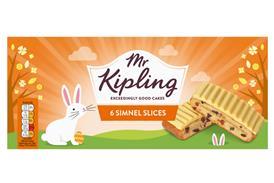






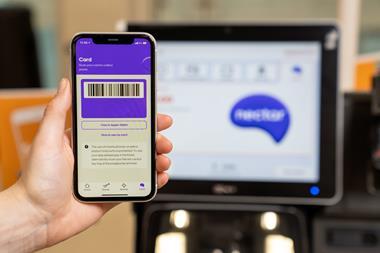
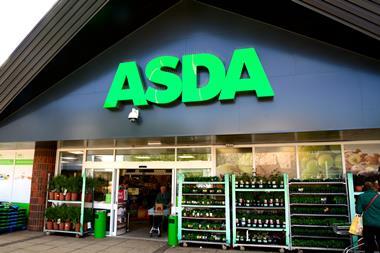
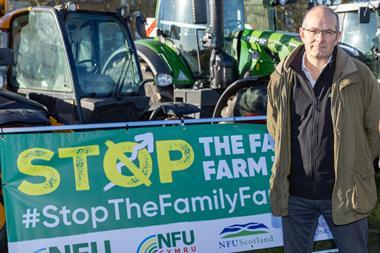


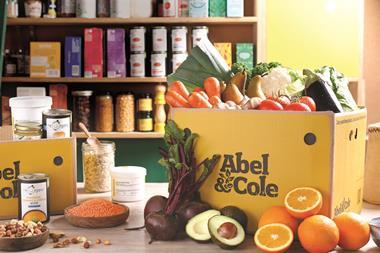

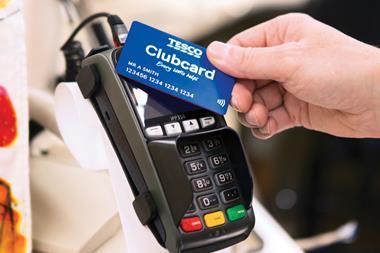
No comments yet